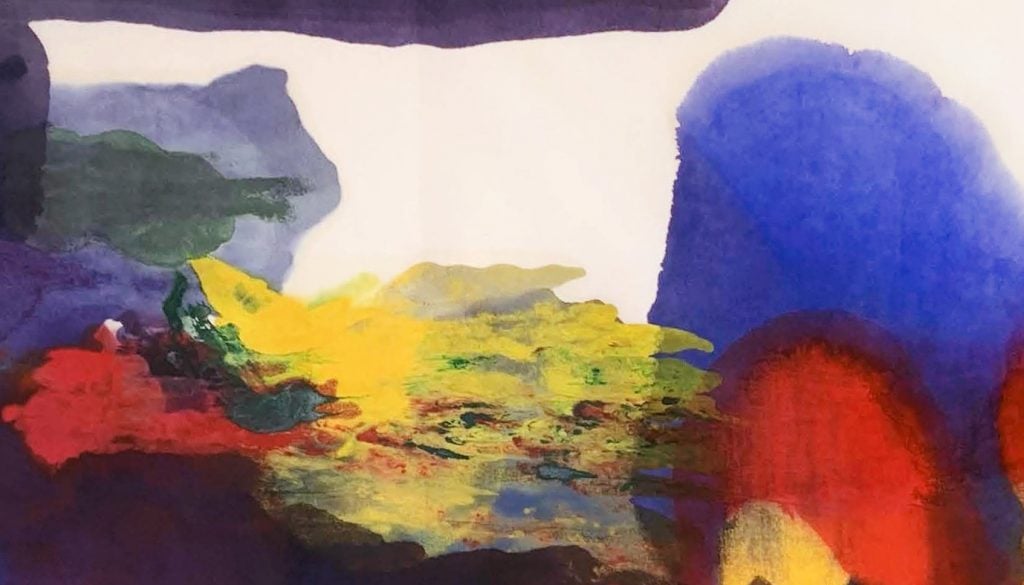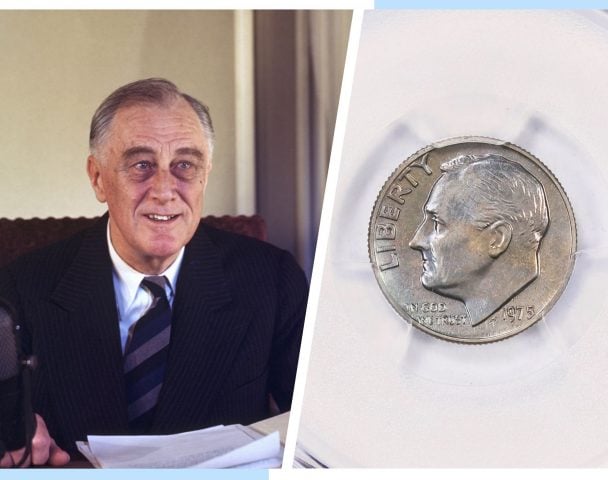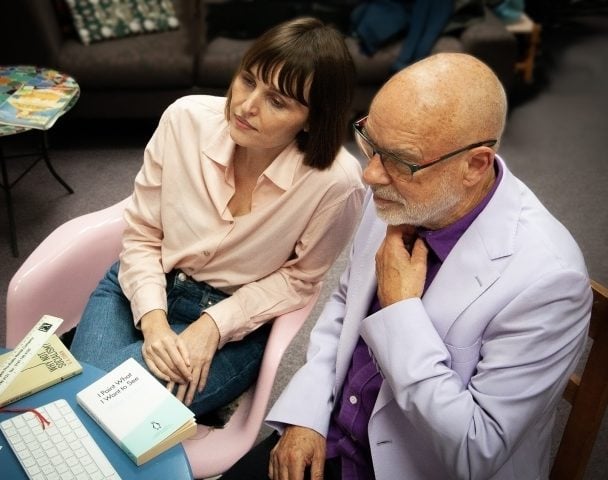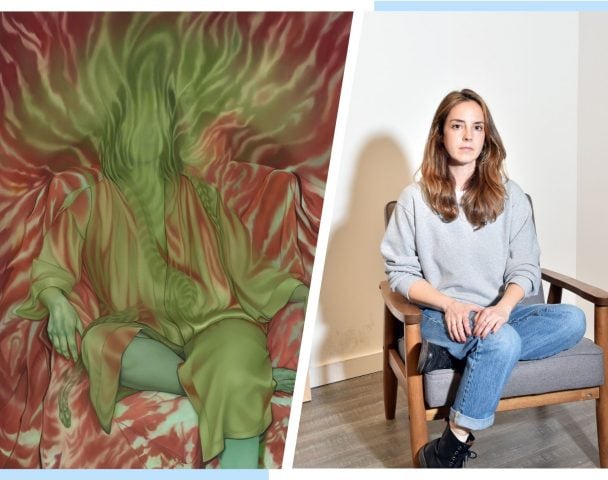This March, Artnet presents its 20th Century Art sale, offering a wealth of exceptional works that span painting, sculpture, photography, and prints. Here, we spoke to Artnet Specialist of Prints and Multiples Sylvie Francois as she took us through the lots—and 20th Century art more generally—one print at a time, elucidating this fascinating medium, and how it became an exciting form of experimentation for pioneering Modern artists.

Wassily Kandinsky, Kleine Welten V (1922). Est. $10,000–$15,000.
This color lithograph is from Kandinsky’s famed Kleine Welten (Small Worlds) print portfolio, published shortly after he began working at the Bauhaus. The portfolio features three different printmaking techniques: etching, woodcut, and lithography. As detailed in the portfolio’s introduction, the artist chose each specific technique for its specific characteristics. The portfolio allowed Kandinsky to explore the interplay of line and form, each work evoking its own distinct feel and aura, its own “kleine welten” or “small world.” Lithography, used for the current lot, was chosen as it allowed Kandinsky a range of markings and color that closely mimic painting. The artist also viewed lithography as the most modern and egalitarian medium as it allowed for more reproduction than earlier printmaking techniques.
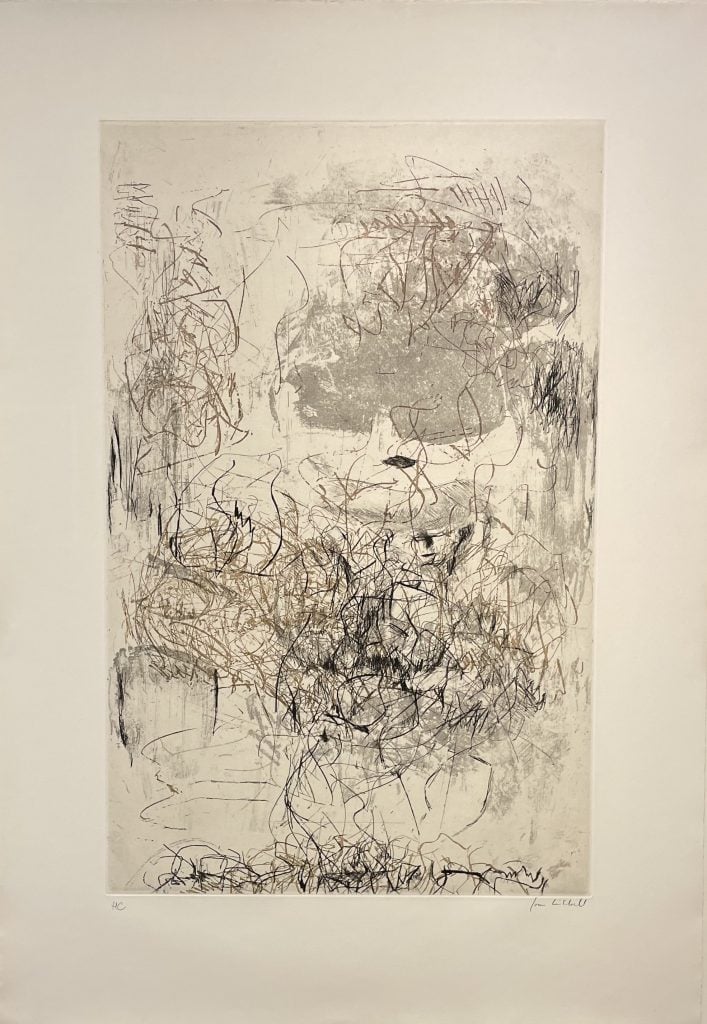
Joan Mitchell, Sunflower VII (1972). Est. $10,000–$15,000.
American artist Joan Mitchell engaged in printmaking throughout the entirety of her career. In 1972, she created a series of aquatint etchings with the famed publisher Arte Adrian Maeght in Paris. Aquatint is an intaglio printmaking technique, used widely since the late 19th century, and is a variant of etching that produces areas of tone rather than lines. It is often used in conjunction with etching (an even older technique), as it is here, to give both lines and shaded tone.
This series was one of the earliest uses of one of her favorite subjects, sunflowers, which grew in her gardens where she had settled in France just a few years prior. While she focused more on color lithography later in her career, these early etchings stand out in her oeuvre as wonderful examples of her deft use of different printmaking techniques.
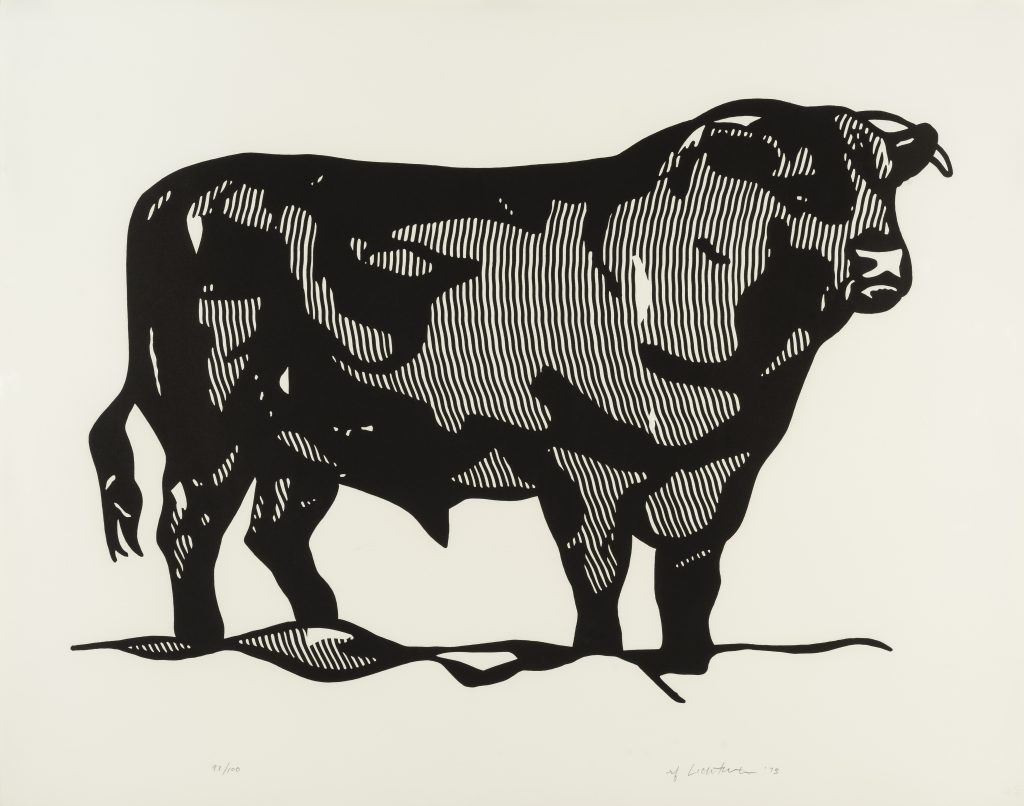
Roy Lichtenstein, Bull I (from Bull Profile series) (1973). Est. $12,000–$18,000.
In the early 1970s, Roy Lichtenstein explored how images can progress from figurative representation to abstraction. The “Bull Profile” series is a set of prints (lithographs, screen prints, and linocuts) produced in 1973 that reference Picasso’s handling of the same subject some 30 years earlier. The present work, Bull I, is the first in the series, where the bull is depicted in the most naturalistic manner. Interested in the relationship between figuration and abstraction, Lichtenstein studied the structure of the animal thoroughly to create this series and went on to paint his famous Cow Triptych one year later. While Bull I utilizes linocutting, the subsequent prints in the series become more technically complicated, combining lithography with color linocut and screen print.
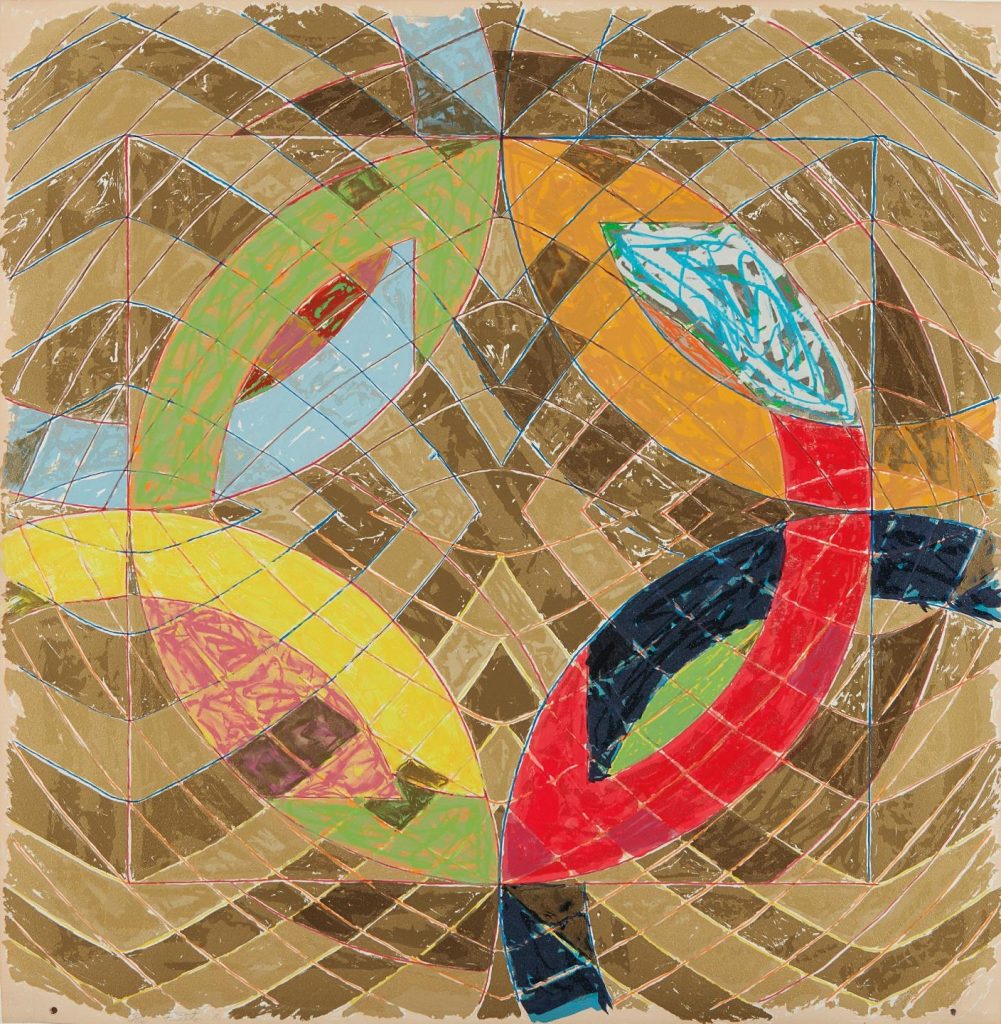
Frank Stella, Polar Co-ordinates VI (from Polar Co-ordinates for Ronnie Peterson) (1980). Est. $10,000–$15,000.
Frank Stella is known for his experimental, imaginative, and large-scale approach to printmaking. His complex prints often layer several different printmaking techniques to create (as seen in the “Polar Co-ordinates” series), rich and dynamic images. The works comprising Frank Stella’s series of prints “Polar Co-ordinates for Ronnie Peterson” were based on two paintings from the artist’s “Saskatchewan” series from the late 1960s. While the pinnacle of the artist’s printmaking career did not take off until his collaboration with master printer Kenneth Tyler a few years later, Polar Co-ordinates VI shows the beginnings of Stella’s infatuation with the medium and the use of myriad techniques in one work. The series marks the first printmaking venture in which the artist deviated significantly from the source material of the paintings that the prints were based on—signifying the artist’s growing ambitions for printmaking in general as a standalone medium in his oeuvre. Complex, scribbled lines (the result of numerous overlays of lithograph and screen print) replaced the flat colors of the original paintings.

Paul Jenkins, Untitled (1993). Est. $3,000–$5,000.
Paul Jenkins spent parts of 1993 and 1994 in Palo Alto, California, working on watercolor monotypes at Smith Andersen Editions, an esteemed fine art press specializing in monoprints and monotypes. The monotype is a variation on the surface process where paper is applied to a design painted on a glass, stone, or metal plate. The result is a single-edition print that is unique and falls somewhere between a print and a painting. Jenkins was a master of watercolor and his collaboration with Smith Andersen Editions and the resulting monotypes are virtually indistinguishable from his unique watercolor paintings.
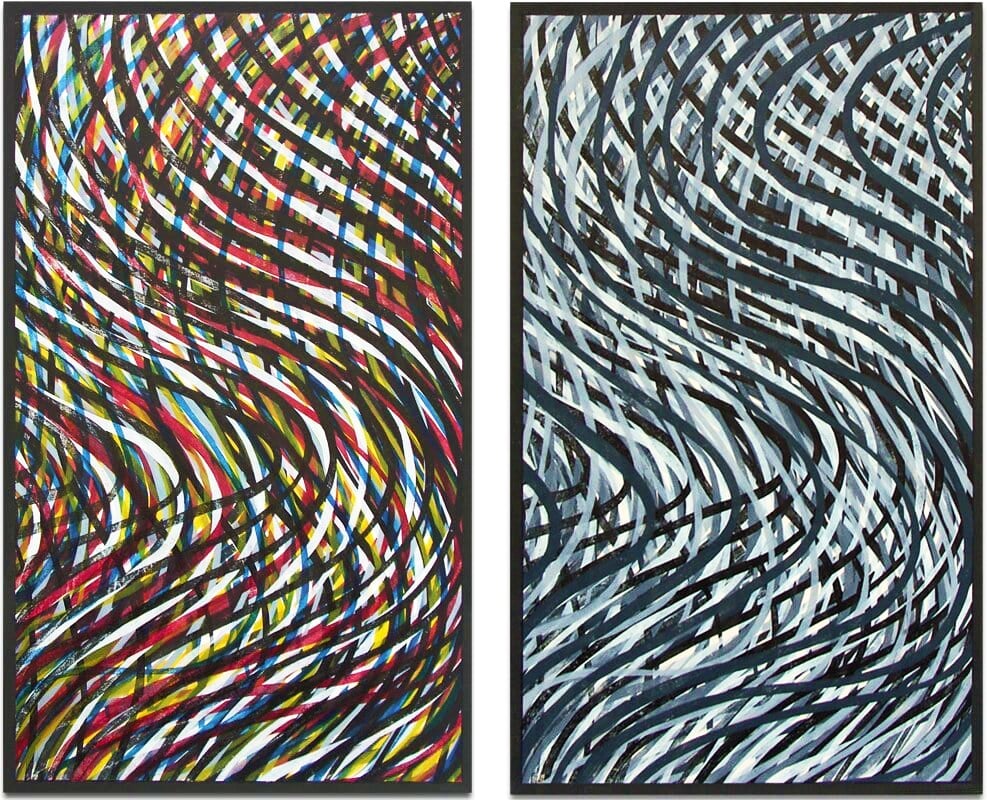
Sol LeWitt, Wavy Lines (Gray and Color) (1995). Est. $10,000–$15,000.
While best known for his wall drawings and modular sculptures, Sol LeWitt was deeply involved with printmaking and created virtually thousands of etchings, lithographs, screen prints, aquatints, woodcuts, and linocuts over the course of his career. His printmaking reflected all the diverse themes that he explored in other mediums, and truly was an extension of his greater oeuvre. Throughout the ’90s, LeWitt created several bright, striking prints using woodcut, a form of relief printing that is one of the oldest printmaking techniques, originally pioneered in Germany in the 14th–15th century. While woodcuts saw a revival in the early 20th century as part of the arts and craft movement, they also have a special place in LeWitt’s personal history, as he first dabbled with woodcut printing in the 1950s during his student days.
Browse these works and dozens more from artists like Andy Warhol, Pablo Picasso, and Robert Longo in the 20th Century Art auction, now live through March 23, 2023.
